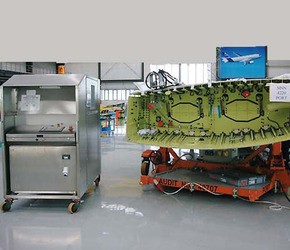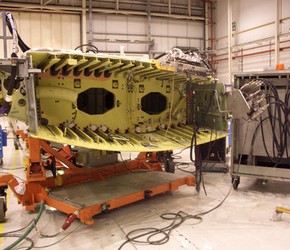Hydraulic Test Equipment > Flushing Test Rig > Condition Monitoring
Bonaprene Fluid Power combine, with their flushing test
rigs and test beds, equipment to monitor the condition
of the hydraulic fluid. This monitoring equipment measures
the level of particles in the hydraulic fluid. This count
is fed to software for analysis and reporting.
Bonaprene Fluid Power offer a wide range of condition
monitoring equipment from portable hand held devices to
permanently installed monitoring equipment. Continuing
monitoring of hydraulic systems helps with system
efficiency, reduced downtime and predictive maintenance
that play a significant role in Bonaprene fluid Power�s
customers being able to efficiently manage their hydraulic
applications and systems.
Automatic Particle Counters
Automatic Particle Counters (APC�s), have been widely
used for many years in condition monitoring of hydraulic
fluids. However, it is only recently that APC�s have become
flexible enough to enable the instruments to be taken out of
the laboratory and used on-line in order to obtain the most
credible form of results.
Unusually, the move from fixed laboratory use, to portable field
use has not been at the expense of accuracy or user flexibility,
but has actually enabled the instruments to be used over a
wider range of applications and situations.
The most common monitoring technique used in automatic particle
counters is that of light obscuration or light blockage. Here, a
focused light source is projected through a moving column of oil,
(in which the contaminants being measured are contained), causing
an image of the contaminant to be projected on to a photo diode
cell, (changing light intensity to an electrical output).
The electrical output of the photo diode cell will vary in
accordance with the size of the particles contained in the
column of oil; the larger the particle, the bigger the change in
the photo diode electrical output.
On-line automatic particle couters must be able to test the oil
sample at whatever cleanliness it is delivered to the machine.
Therefore it was necessary to develop technology to ensure the
on-line APC was able to test a sample without the conventional
laboratory technique that requires dilution - a practice that
would have been simply impossible with a portable unit.
By careful design and window sizing, gravimetric levels as
high as 310mg of dirt per litre, (equivalent to up to 4 million
particles >6 micron per 100 ml), can be achieved without
making the instrument susceptible to counter saturation.
These high saturation point on-line automatic particle counters,
whilst losing none of the accuracy of their laboratory counterparts,
enable particle counting to be carried out quickly and accurately.
The portable particle counters feature microprocessor controlled
optical scanning for accurate contaminant measurement with a
calibration range from ISO 7 to ISO 22 with no counter saturation.
The particles are measured by a photo diode that converts
light intensity to a voltage output which is recorded against
time.
As the particle moves across the window the amount of
light lost is proportional to the size of the particle. This
reduction in voltage is measured and recorded.
This �voltage� lost relates directly to the area of the particle
measured, is changed into a �positive� voltage and then in
turn changed into a capacitance value.
This value is counted and stored in the automatic particle counter
computer in one of 6 channels according to particle size.
Readouts are displayed on the hand-held LCD in the
accepted ISO and NAS standards ready for hard copy
printing or RS232 computer download.
The on-board computer allows storage of up to 300
test results.
A focused light source is projected through a moving
column of oil.
The Automatic Particle Counters are designed to
handle phosphate ester hydraulic fluids such as Hyjet
and Skydrol to Airbus specification NSA307110.




